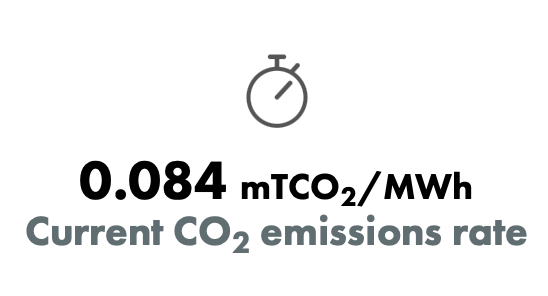Time, Location and Electricity Costs
Basics of Variability of Electricity Costs
This post provides context on how Time and Location impact our Electricity Costs. A companion post provides an informal review of Time of Use Tariffs and a third one discusses Time-Shifting Your Energy Costs.
The content is grounded in my experience in Northern California but I use examples from other places in the USA. Any and all feedback, corrections and/or additions, is appreciated.
Electricity Costs in California
Electricity in California is managed by CAISO, the California Independent System Operator. CAISO operates our grid and two energy markets, the Western Energy Imbalance Real-Time Market (WEIM) launched in 2014 and the Early Day Ahead Market (EDAM) to be launched in 2026.
Supply
I like CAISO. Their online meetings are open to the public, they have a modern web site and mobile app, and they even have a BlueSky account. Data from CAISO is aggregated in other sites like GridStatus - see the CAISO Live Dashboard.
The chart below captures California’s Supply Mix during Feb 10th, 2025 and shows Renewables (mostly Solar) kicking in around 7am and tapering around 4pm.
The chart shows two resources going negative: imports and batteries. A negative import is electricity being exported out of the region managed by CAISO. A negative battery is a grid-scale battery being charged.
The grid batteries are charged from renewables in the middle of the day and are discharged before and after that. These batteries are time-shifting the energy generated by the solar farms to reduce greenhouse gases (GHG) and reduce our electricity cost; we can do the same in our residences through our behind-the-meter batteries.
LMP Costs
Different supply resources will have different properties. Grid-level Solar is very cheap but it is time and weather dependent and cannot be dispatched at will, though they can be complemented with batteries to achieve some of the same effect. Gas Turbines can be dispatched but the cost depends on the commodity price of Natural Gas and that can be quite spiky (see graph below). Methane (Natural Gas) is a very powerful Greenhouse Gas; see the section below on the GHG impact.
The price of our electricity can also vary with the location because the grid does not have infinite capacity nor is uniform and grid congestion plays a role.
All together, the price depends on supply/demand/congestion. CAISO computes the Locational Marginal Price (LMP) to represent the real-time price of electricity at different locations on the California ISO's power grid. The LMP price value can be specific to a grid node, or aggregated to a region.
Below is a GridStatus map displaying the price of grid nodes and showing a spike at LIMESTNE_GNODE1, North East of Sacramento.
And this GridStatus graph shows the historical LMP for the NP15 region (roughly all Northern California) between Feb 6 and Feb 12, 2025.
GHG Costs
Another consequence of the diversity of energy sources is the impact in GreenHouse Gases as renewable sources generate fewer GHG. Below is the CO2 produced by the grid in a recent day, as per CAISO:
Note that this graph shows total mTCO2 (metric tons of CO2) against hours in the day. Ideally I’d show a graph of mTCO2 per MWh against hours the day - right now I can only find the instantaneous number:
An even more useful graph would show the mTCO2/MWh but specific to the energy delivered to my node, similar to LMP but as CO2. I’ve seen data like that at coarser level, but not at the Grid Nodal level.
Electricity Rates
Given all this variability, a Time Of Use (TOU) tariff offers different rates at different times with the intention of modifying the ratepayer’s behavior and shifting their energy usage. The goals of the behavior change may be to reduce the cost of our electricity consumption, or the GHG impact, or grid congestion, or others.
Different electricity Utilities and Retailers take different approaches to TOU. The two main properties of a TOU tariff are, the Time Periods, and the $/kWh for each period. Some tariffs have additional nuances, like Demand Charges and Capacity Charges.
As an example, our household is in the PG&E territory. We have EV charging and we use the EV2-A rate with three periods, with rates that change through the year.
There are many variants of TOUs. See Time of Use Tariffs for more details on several USA tariffs.
Time Shifting Our Consumption
Our energy monetary cost is based on the rate that applies to our house imports, so the main approach to reduce electricity costs is to move imports away from high rate periods. There are several ways to do this:
Run Appliances/Electrical Loads at a cheap time,
Have Appliances that can store energy when it is cheap and use it later,
Use a Thermal Energy Store,
Use an Electrical Energy Store, i.e. a battery
The post on Time-Shifting Your Energy Consumption expands on this, mostly exploring the last point, and explains how energy storage and Time of Use (TOU) electrical rates together help reduce our energy costs.
Our GHG impact can benefit from applying the same principle of time-shifting consumption.
Recap
Different supply resources will have different properties, and our electricity grid does not have infinite capacity nor is uniform. All of this means that the cost and impact of electricity varies through time and location. I tried to capture what I learned about these topics in this post. A companion post provides an informal review of Time of Use Tariffs and a third one discusses Time-Shifting Your Energy Consumption.









